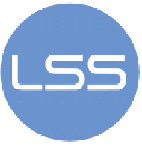Otkriven je sigurnosni propust vezan uz Microsoft .NET Framework. Udaljeni napadač može iskoristiti taj nedostatak za otkrivanje osjetljivih informacija.
| Paket: | Microsoft .NET Framework 4.x |
| Operacijski sustavi: | Microsoft Windows XP, Microsoft Windows Server 2003, Microsoft Windows Vista, Microsoft Windows Server 2008, Microsoft Windows 7 |
| Kritičnost: | 3.7 |
| Problem: | neodgovarajuća provjera ulaznih podataka |
| Iskorištavanje: | udaljeno |
| Posljedica: | otkrivanje osjetljivih informacija |
| Rješenje: | programska zakrpa proizvođača |
| CVE: | CVE-2011-1977 |
| Izvorni ID preporuke: | MS11-066 |
| Izvor: | Microsoft |
| Problem: | |
| Komponenta Microsoft Chart nepravilno rukuje posebnim znakovima u URI. |
|
| Posljedica: | |
| Udaljeni napadač može otkriti osjetljive informacije. |
|
| Rješenje: | |
| Svim korisnicima se savjetuje korištenje programske zakrpe koja otklanja opisani propust. |
|
Izvorni tekst preporuke
Microsoft Security Bulletin MS11-066 - Important
Vulnerability in Microsoft Chart Control Could Allow Information Disclosure (2567943)
Published: August 09, 2011
Version: 1.0
General Information
Executive Summary
This security update resolves a privately reported vulnerability in ASP.NET Chart controls. The vulnerability could allow information disclosure if an attacker sent a specially crafted GET request to an affected server hosting the Chart controls. Note that this vulnerability would not allow an attacker to execute code or to elevate the attacker's user rights directly, but it could be used to retrieve information that could be used to further compromise the affected system. Only web applications using Microsoft Chart Control are affected by this issue. Default installations of the .NET Framework are not affected.
This security update is rated Important for Microsoft .NET Framework 4 on all supported releases of Microsoft Windows and for Chart Control for Microsoft .NET Framework 3.5 Service Pack 1. For more information, see the subsection, Affected and Non-Affected Software, in this section.
The security update addresses the vulnerability by correcting the manner in which the Chart controls verify functions within specially crafted URIs. For more information about the vulnerability, see the Frequently Asked Questions (FAQ) subsection for the specific vulnerability entry under the next section, Vulnerability Information.
Recommendation. The majority of customers have automatic updating enabled and will not need to take any action because this security update will be downloaded and installed automatically. Customers who have not enabled automatic updating need to check for updates and install this update manually. For information about specific configuration options in automatic updating, see Microsoft Knowledge Base Article 294871.
For administrators and enterprise installations, or end users who want to install this security update manually, Microsoft recommends that customers apply the update at the earliest opportunity using update management software, or by checking for updates using the Microsoft Update service.
See also the section, Detection and Deployment Tools and Guidance, later in this bulletin.
Known Issues. Microsoft Knowledge Base Article 2567943 documents the currently known issues that customers may experience when installing this security update. The article also documents recommended solutions for these issues.
Top of sectionTop of section
Affected and Non-Affected Software
The following software have been tested to determine which versions or editions are affected. Other versions or editions are either past their support life cycle or are not affected. To determine the support life cycle for your software version or edition, visit Microsoft Support Lifecycle.
Affected Software
Operating System Component Maximum Security Impact Aggregate Severity Rating Bulletins Replaced by this Update
Windows XP Service Pack 3
Microsoft .NET Framework 4[1]
(KB2487367)
Information Disclosure
Important
None
Windows XP Professional x64 Edition Service Pack 2
Microsoft .NET Framework 4[1]
(KB2487367)
Information Disclosure
Important
None
Windows Server 2003 Service Pack 2
Microsoft .NET Framework 4[1]
(KB2487367)
Information Disclosure
Important
None
Windows Server 2003 x64 Edition Service Pack 2
Microsoft .NET Framework 4[1]
(KB2487367)
Information Disclosure
Important
None
Windows Server 2003 with SP2 for Itanium-based Systems
Microsoft .NET Framework 4[1]
(KB2487367)
Information Disclosure
Important
None
Windows Vista Service Pack 2
Microsoft .NET Framework 4[1]
(KB2487367)
Information Disclosure
Important
None
Windows Vista x64 Edition Service Pack 2
Microsoft .NET Framework 4[1]
(KB2487367)
Information Disclosure
Important
None
Windows Server 2008 for 32-bit Systems Service Pack 2
Microsoft .NET Framework 4**[1]
(KB2487367)
Information Disclosure
Important
None
Windows Server 2008 for x64-based Systems Service Pack 2
Microsoft .NET Framework 4**[1]
(KB2487367)
Information Disclosure
Important
None
Windows Server 2008 for Itanium-based Systems Service Pack 2
Microsoft .NET Framework 4[1]
(KB2487367)
Information Disclosure
Important
None
Windows 7 for 32-bit Systems and Windows 7 for 32-bit Systems Service Pack 1
Microsoft .NET Framework 4[1]
(KB2487367)
Information Disclosure
Important
None
Windows 7 for x64-based Systems and Windows 7 for x64-based Systems Service Pack 1
Microsoft .NET Framework 4[1]
(KB2487367)
Information Disclosure
Important
None
Windows Server 2008 R2 for x64-based Systems and Windows Server 2008 R2 for x64-based Systems Service Pack 1
Microsoft .NET Framework 4*[1]
(KB2487367)
Information Disclosure
Important
None
Windows Server 2008 R2 for Itanium-based Systems and Windows Server 2008 R2 for Itanium-based Systems Service Pack 1
Microsoft .NET Framework 4[1]
(KB2487367)
Information Disclosure
Important
None
*Server Core installation affected. This update applies, with the same severity rating, to supported editions of Windows Server 2008 R2 as indicated, whether or not installed using the Server Core installation option. For more information on this installation option, see the TechNet articles, Managing a Server Core Installation and Servicing a Server Core Installation. Note that the Server Core installation option does not apply to certain editions of Windows Server 2008 and Windows Server 2008 R2; see Compare Server Core Installation Options.
**Server Core installation not affected. The vulnerabilities addressed by this update do not affect supported editions of Windows Server 2008 or Windows Server 2008 R2 as indicated, when installed using the Server Core installation option. For more information on this installation option, see the TechNet articles, Managing a Server Core Installation and Servicing a Server Core Installation. Note that the Server Core installation option does not apply to certain editions of Windows Server 2008 and Windows Server 2008 R2; see Compare Server Core Installation Options.
[1].NET Framework 4 Client Profile not affected. The .NET Framework version 4 redistributable packages are available in two profiles: .NET Framework 4 and .NET Framework 4 Client Profile. The .NET Framework 4 Client Profile is a subset of the .NET Framework 4. The vulnerability addressed in this update affects only the .NET Framework 4 and not the .NET Framework 4 Client Profile. For more information, see the MSDN article, Installing the .NET Framework.
Developer Tools Maximum Security Impact Aggregate Severity Rating Bulletins Replaced by this Update
Chart Control for Microsoft .NET Framework 3.5 Service Pack 1
(KB2500170)
Information Disclosure
Important
None
Non-Affected Software
Microsoft .NET Framework
Microsoft .NET Framework 1.1 Service Pack 1
Microsoft .NET Framework 2.0 Service Pack 2
Microsoft .NET Framework 3.0 Service Pack 2
Microsoft .NET Framework 3.5 Service Pack 1
Microsoft .NET Framework 3.5.1
Top of sectionTop of section
Frequently Asked Questions (FAQ) Related to This Security Update
Vulnerability Information
Severity Ratings and Vulnerability Identifiers
Chart Control Information Disclosure Vulnerability - CVE-2011-1977
Update Information
Detection and Deployment Tools and Guidance
Security Update Deployment
Other Information
Acknowledgments
Microsoft thanks the following for working with us to help protect customers:
Nico Leidecker and James Forshaw of Context Information Security for reporting the Chart Control Information Disclosure Vulnerability (CVE-2011-1977)
Top of sectionTop of section
Microsoft Active Protections Program (MAPP)
To improve security protections for customers, Microsoft provides vulnerability information to major security software providers in advance of each monthly security update release. Security software providers can then use this vulnerability information to provide updated protections to customers via their security software or devices, such as antivirus, network-based intrusion detection systems, or host-based intrusion prevention systems. To determine whether active protections are available from security software providers, please visit the active protections Web sites provided by program partners, listed in Microsoft Active Protections Program (MAPP) Partners.
Top of sectionTop of section
Support
Customers in the U.S. and Canada can receive technical support from Security Support or 1-866-PCSAFETY. There is no charge for support calls that are associated with security updates. For more information about available support options, see Microsoft Help and Support.
International customers can receive support from their local Microsoft subsidiaries. There is no charge for support that is associated with security updates. For more information about how to contact Microsoft for support issues, visit the International Support Web site.
Top of sectionTop of section
Disclaimer
The information provided in the Microsoft Knowledge Base is provided "as is" without warranty of any kind. Microsoft disclaims all warranties, either express or implied, including the warranties of merchantability and fitness for a particular purpose. In no event shall Microsoft Corporation or its suppliers be liable for any damages whatsoever including direct, indirect, incidental, consequential, loss of business profits or special damages, even if Microsoft Corporation or its suppliers have been advised of the possibility of such damages. Some states do not allow the exclusion or limitation of liability for consequential or incidental damages so the foregoing limitation may not apply.
Top of sectionTop of section
Revisions
V1.0 (August 9, 2011): Bulletin published.




Posljednje sigurnosne preporuke